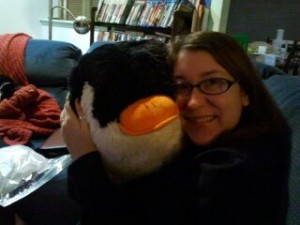Find Touch would like to present a guest writer, Carole Osborne. Carole is a renowned author and leader in the world of massage therapy. She has pioneered the reintroduction of therapeutic massage and bodywork to healthcare for the childbearing year.
Supporting Pregnancy with Massage Therapy
Nurturing touch during pregnancy, labor, and the postpartum period is not a new concept. Cultural and anthropological studies reveal that massage and movement during the childbearing experience was and continues to be a prominent part of many cultures’ healthcare.1 Studies indicate that most of the more peaceful cultures use touch prominently during pregnancy and early childhood.2 Midwives, who for centuries have provided maternity care, have highly developed hands-on skills.
Current research on the benefits of touch is providing a contemporary basis for its reintroduction in many technological societies, including the United States. Scientists have found that rats restricted from cutaneous self-stimulation had poorly developed placentas and 50% less mammary gland development. Their litters were often ill, stillborn, or died shortly after birth due to poor mothering skills.3 Pregnant women massaged twice weekly for 5 weeks experienced less anxiety, leg and back pain. They reported better sleep and improved moods, and their labors had fewer complications, including less premature births.4 Studies show that when women received nurturing touch during later pregnancy they touch their babies more frequently and lovingly.5 During labor the presence of a doula, a woman providing physical and emotional support, including extensive touching and massage, reduces the length of labor and number of complications, interventions, medications, and Cesareans.6
Why Prenatal Massage Therapy?
Profound local and systemic changes in a woman’s physiology occur as a result of conception and the process of labor. Changes during pregnancy span the psychological, physiological, spiritual, and social realms. Massage therapy may help a woman approach her due date with less anxiety, as well as less physical discomfort.7
A typical session performed by a therapist specializing in pre- and perinatal massage therapy can address pregnancy’s various physical challenges: postural changes, pain in the lower back, pelvis, or hips, and edema. Touch during pregnancy may facilitate gestation by supporting cardiac function, placental and mammary development, and increasing cellular respiration.8 It also may reduce depression and stress by contributing to sympathetic nervous system sedation. 9 Deep tissue, trigger point, and both active and passive movements alleviate stress on weight-bearing joints and myofascial structures, especially the sacroiliac and lumbosacral joints, lumbar spine, hips, and pelvic musculature.10 Structural balancing and postural reeducation reduce neck and back pain caused by improper posture and strain to the uterine ligaments. Prenatal massage therapy also may facilitate ease of labor by preparing the muscles for release and support during childbirth.11
Beyond these physical effects, an effective prenatal massage therapy session provides emotional support. In the safe care of a focused, nurturing therapist, many women unburden their worries, fears, and other anxieties about childbearing. Bodywork may help the mother-to-be develop the sensory awareness necessary to birth more comfortably and actively. Laboring women whose partners learned and provided basic massage strokes to their backs and legs had shorter, less complicated labors. 87% of these massaged women were more satisfied with their partners’ support during labor.12 Imagine the benefits generated by the skilled hands of a trained touch specialist!
The Postpartum Period
Beginning with the baby’s birth, a new mother must cope with more changes. She is typically only 10 to 12 pounds lighter, yet she is still maintaining her body with an anterior weight load posture. Additional musculoskeletal stresses occur during the many hours of feeding, carrying and other newborn care. The massage practitioner may facilitate proprioceptive reprogramming to gently return the body to its pre-pregnancy state, to alleviate pain, and to bring about a renewed sense of body and self.13
Postpartum sessions often focus on relaxation, physiological recovery and pain relief. Longer- term care may normalize pelvic position and re-pattern overall body use. Postpartum massage sessions may restore functional muscle use in the lumbar spine area14, as well as strengthen and increase tonus in the abdominal musculature stretched and separated by pregnancy. Additionally, the overtaxed, hypotoned iliopsoas muscle functions can be improved. Upper back muscles which now support larger breasts and the carried infant’s weight need attention to reduce strain, and to help maintain flexibility despite the physical stresses of infant feeding and care.
For post-Cesarean mothers, specific therapeutic techniques also can reduce scar tissue formation and facilitate the healing of the incision and related soft tissue areas, as well as support the somato-emotional integration of her childbearing experience.15
Qualified Pre- & Perinatal Massage Therapists
While approximately three quarters of pregnancies proceed normally and are uncomplicated by medical conditions16, it is still advisable for massage therapists to be knowledgeable about pre- and perinatal physiology, high risk factors, and complications of pregnancy. Even without problems developing, physiological changes necessitate modifications to or elimination of various techniques and methodologies, depending on the individual and the trimester of pregnancy. When medical conditions develop, additional adaptations and consultation with physicians and/or midwives prior to sessions is prudent. Additional specific specialized training in prenatal and perinatal massage therapy helps to qualify massage therapists to safely and effectively meet women’s many and complex needs.
Somatic practitioners will find reliable, detailed, research- based protocols and contraindications in the second edition ofPre- and Perinatal Massage Therapy, and in other media and training programs created by this author. For those seeking comprehensive hands-on training and certification as a maternity massage specialist, practitioners should consider enrolling in the upcoming 32-hour technique certification workshop.
This book and these training programs have developed from over 37 years as a somatic practitioner and educator and 30 years of specialization in maternity and infant massage. Students benefit from a continually expanding body of knowledge, research, clinical experience, and consultations with other perinatal health care providers.
The highly qualified instructors of Pre- and Perinatal Massage Therapy offer a safe and comprehensive approach to pregnancy, labor, and postpartum massage therapy. They also encourage an empathetic, non-judgmental attitude in supporting women’s ‘pregnant feelings’. These certification workshops include over 80 techniques specifically adapted for pre- and perinatal needs, and the practical marketing strategies, ethics, and skills to elicit collaboration with other perinatal specialists and to build a successful pre- and perinatal massage therapy practice.
These courses are approved by the National Certification Board for Therapeutic Massage and Bodywork (32 continuing education credits). Each workshops and staff is also approved by the Florida Board of Massage (and other local state boards as required) and the California Board of Registered Nursing; meet current American Massage Therapy Association continuing education standards; can be used for Associated Bodywork and Massage Professionals membership; and can be used for continuing education credit with Doulas of North America.
Skilled, nurturing touch is good for moms and their babies, and for the family of humanity. As complementary healthcare research expands, more data validate improved outcomes from maternity massage therapy. With over 4 million American women pregnant annually, this is a viable and satisfying niche market for therapeutic massage and bodywork practitioners to pursue.
Author:
Carole Osborne has been a somatic practitioner since 1974, specializing in maternity care since 1980. In addition to private practice, she has worked in osteopathic, psychological, and women’s medical settings. She is author of Deep Tissue Sculpting, Pre- and Perinatal Massage Therapy, 2ndedition and is a widely sought-after continuing education provider. In 2008, the AMTA Council of Schools presented Carole with the National Teacher of the Year Award, a high point of her 37 years as a somatic arts and sciences educator. She is also a contributor to Teaching Massage and many massage therapy publications.
To order a book or to learn more about workshops, contact the local sponsor for Portland, East West College at 503-233-6500 or www.eastwestcollegecom, or for Seattle, Simkin Center for Allied Birth Vocations 425-602-3361 or www.bastyr.edu/continunged.
Call Carole at Body Therapy Associates – (800) 586-8322 or (858) 277-8827.
Facebook page: Carole Osborne’s Prenatal and Deep Tissue Massage Training
###
[photos available upon request.]
References:
1 Goldsmith, J. Childbirth Wisdom. New York: Congdon and Weed, 1984.
2 Prescott, J. Prevention or Therapy and the Politics of Trust: Inspiring a New Human Agenda. Psychotherapy and Politics International 2005;3:194-221. DOI:10,1002/ppi.6. http:..www.violence.de/Prescott/politics-trust.pdf. Accessed 2/6/2009.
3 Rosenblatt, J.S. and D.S. Lehrman. Maternal behavior of the laboratory rat. Maternal Behavior in Mammals, Wiley, New York, 1963, p. 14.
4 Field, T., M. Hernandez-Reif, S. Hart, et al. Pregnant women benefit from massage therapy. J. Psychosomatic Obstetrics and Gynecology, 20(1), March, 1999, 31-38.
5 Rubin, R. Maternal Touch. Nurs Outlook, 11/1963, 828-31
6 Klaus, K, Kennell, J., Klaus, P. The Doula Book: How a Trained Labor Companion Can Help You Have a Shorter, Easier, and Healthier Birth. New York: DeCapo Press, 2002.
7 Field T. Diego MA, Hernandez-Reid M, et al. Massage therapy effects on depressed pregnant women. J Psychos Obstet Gynecol 2004;25:115-122.
8 Roth LL, Rosenblatt JS. Mammary glands of pregnant rats: development stimulated by licking. Science 1996; 264:1403-1404.
9 Field, 2004.
10 Pryde M. Effectiveness of massage therapy for subacute low-back pain. A randomized controlled trial. Can Med Assoc J 2000;162(13):1815-1820.
11 Bodner-Adler B, Bodner K, Mayerhofer, K. Perineal massage during pregnancy in primiparous women. Int J Gynecol Obstet 2002.
12 Chang M, Wang S, Chen C. Effects of massage on pain and anxiety during labour: a randomized controlled trial in Taiwan. J Adv Nurs, 2002 Apr; 38 (1):68-73.
13 Pirie A and Herman H. How to Raise Children Without Breaking Your Back. Second edition. W. Somerville, MA: Ibis Publications, 2003.
14 Quebec Task Force on Spinal Disorders. Scientific approach to the assessment and management of activity-related spinal disorders. Spine, 12:Supplement 1, 1987.
15 Andrade C-K and Clifford P. Outcome-Based Massage: From Evidence to Practice. Second Edition. Baltimore: Lippincott, Williams and Wilkins, 2008.
16 Ricci S. Essentials of Maternity, Newborn and Women’s Health Nursing. 2nd Ed. Baltimore: Lippincott Williams & Wilkins, 2009.






